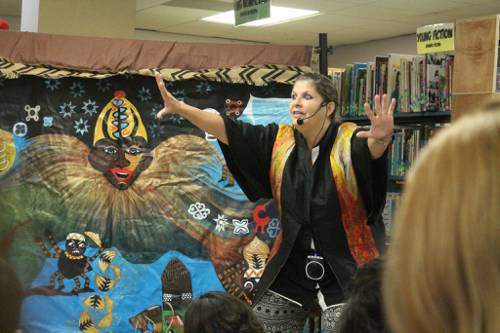
FAQ About The Influence of Indigenous Oral Traditions in Contemporary Narratives

What are indigenous oral traditions?
Indigenous oral traditions encompass the stories, teachings, rituals, and history that have been passed down through generations by word of mouth among indigenous communities. These traditions play a crucial role in preserving the culture, values, and identities of indigenous peoples across the world. They include myths, legends, folktales, songs, and chants that are often used to teach ethical guidelines, historical accounts, and social norms.

How do indigenous oral traditions influence contemporary literature?
Indigenous oral traditions influence contemporary literature by providing unique narrative structures, themes, and character archetypes. Authors incorporate elements such as interconnected stories, cyclical time concepts, and a deep connection to nature and spirituality. These traditions offer rich cultural perspectives that challenge Western narrative forms and introduce readers to diverse worldviews.

Can you give examples of indigenous storytelling in modern films?
Modern films like "Smoke Signals" and "The Fast Runner" showcase indigenous storytelling through their narrative structures and cultural contexts. These films highlight indigenous themes, such as community, identity, and the connection to land, while often using traditional storytelling forms like oral narration, myths, and legends to structure the plot.

Why is it important to incorporate indigenous oral traditions in media?
Incorporating indigenous oral traditions in media is important for preserving cultural heritage, promoting diversity, and fostering understanding among different cultures. It challenges dominant narratives and provides a platform for indigenous voices to share their unique stories and perspectives, helping to combat stereotypes and enrich global cultural landscapes.

How are oral traditions adapted into written forms?
Oral traditions are adapted into written forms by documenting stories, songs, and teachings in books, scripts, and other written media. This process often involves collaboration with indigenous elders and storytellers to ensure authenticity and respect for the original forms. The adaptation may also include the use of indigenous languages and maintaining the rhythmic and repetitive qualities of oral storytelling.

What challenges exist in translating oral traditions to contemporary narratives?
Translating oral traditions to contemporary narratives presents challenges such as preserving the nuances and cultural contexts of the original stories. Oral traditions often rely on performance elements such as tone, rhythm, and gestures, which can be difficult to convey in writing or in film. There is also the risk of cultural appropriation or misrepresentation if the adaptation is not done with respect and sensitivity.

How do indigenous oral traditions promote cultural continuity?
Indigenous oral traditions promote cultural continuity by transmitting ancestral knowledge, values, and history from one generation to the next. They reinforce community bonds and help maintain a sense of identity and heritage in the face of globalization and cultural homogenization. These traditions offer adaptable ways for indigenous peoples to express their culture in contemporary settings.

What role do indigenous communities play in preserving oral traditions?
Indigenous communities play a crucial role in preserving oral traditions by ensuring that their stories and teachings are taught and shared among community members. Elders often hold the responsibility of passing down these traditions to younger generations. Communities may also engage in preserving languages and recording oral histories to safeguard their cultural heritage for future generations.

Are there any notable authors who use indigenous storytelling methods?
Notable authors such as Louise Erdrich, Leslie Marmon Silko, and Thomas King incorporate indigenous storytelling methods in their works. They weave traditional narratives and structures into their writing to explore themes of identity, community, and the environment. Their stories often reflect the cyclical nature and interconnectedness found in many indigenous oral traditions.

How is technology used to preserve indigenous oral traditions?
Technology is used to preserve indigenous oral traditions by recording stories, interviews, and performances using audio, video, and digital platforms. These technologies enable the documentation of oral histories and provide broader access to materials that might otherwise be limited to local communities. Online archives and interactive multimedia projects also help in sharing these traditions with global audiences.

What is the significance of myths and legends in indigenous oral traditions?
Myths and legends hold significant roles in indigenous oral traditions as they convey moral lessons, cultural values, and historical events. They often explain natural phenomena, recount the origins of cultural practices, and establish societal norms. Through the retelling of these sacred stories, elders and storytellers can educate younger generations and uphold cultural cohesion.

How does indigenous oral storytelling differ from Western narrative traditions?
Indigenous oral storytelling often differs from Western narrative traditions in its non-linear structure, communal perspective, and incorporation of spiritual and natural elements. While Western narratives tend to follow a clear beginning, middle, and end, indigenous stories might involve cycles and connections between past, present, and future. They also emphasize the relationship between humans, nature, and the spiritual world.

Can indigenous oral traditions improve cultural sensitivity in media?
Yes, incorporating indigenous oral traditions into media can improve cultural sensitivity by highlighting diverse viewpoints and encouraging respectful representation of indigenous cultures. It educates audiences about the complexity and richness of indigenous societies and traditions, challenging stereotypes and promoting a more nuanced understanding of these communities.

How are indigenous oral traditions relevant to environmental narratives?
Indigenous oral traditions are highly relevant to environmental narratives as they often emphasize the interconnectedness between humans and nature. These stories highlight the importance of respecting and protecting the environment, as many indigenous cultures view the earth as a living entity that must be honored. Contemporary narratives can draw on these philosophies to foster environmental stewardship and sustainable living.

Do indigenous oral traditions influence mainstream culture?
Yes, indigenous oral traditions do influence mainstream culture by introducing alternative ways of understanding the world and storytelling. Elements of these traditions are increasingly incorporated into various forms of media, challenging dominant cultural narratives and providing insights into indigenous ways of knowing and being. This influence also contributes to the growing appreciation and acceptance of cultural diversity.

How are schools incorporating indigenous oral traditions in education?
Schools are incorporating indigenous oral traditions into education by integrating indigenous stories, histories, and perspectives into curricula. This might include using indigenous texts, inviting storytellers to give talks, and creating projects that focus on understanding and respecting indigenous cultures. Educators aim to promote inclusivity and broaden students' understanding of cultural diversity.

What impact do indigenous oral traditions have on identity formation?
Indigenous oral traditions have a significant impact on identity formation by reinforcing a sense of belonging and cultural heritage. Through the transmission of stories, rituals, and historical accounts, individuals gain a deeper understanding of their cultural roots and values. This can foster pride and a strong sense of self, helping individuals navigate their place within both indigenous and broader societies.

How do contemporary artists use indigenous storytelling methods?
Contemporary artists use indigenous storytelling methods by integrating themes, symbols, and narrative forms native to indigenous cultures into their work. This can be seen in visual arts, music, and theatre, where artists may draw on traditional stories and motifs to address contemporary issues, such as identity, environmental concerns, and social justice, thereby keeping indigenous cultures dynamic and relevant.

What are some common misconceptions about indigenous oral traditions?
Common misconceptions about indigenous oral traditions include the beliefs that they are primitive or static. In reality, these traditions are dynamic and have evolved over time, adapting to changing circumstances while retaining core cultural values. They are also sophisticated narrative forms that encompass rich philosophies and worldviews, not merely simple tales or folklore.

How are indigenous languages preserved through oral traditions?
Indigenous languages are preserved through oral traditions as these stories, songs, and teachings are often delivered in the native language. Oral traditions serve as an effective vehicle for keeping indigenous languages alive, fostering linguistic diversity, and reinforcing cultural identity. Communities engage in active efforts to teach and transmit language alongside cultural knowledge in both informal and formal settings.
